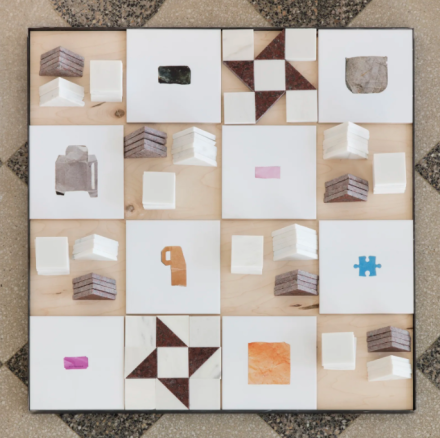
Michael Queenland, Untitled (Stationary) (2017), via Tanya Bonakdar
Marking a sustained engagement with language and text, the current group show at Tanya Bonakdar Los Angeles, Restless Index, explores a specific approach to cataloging and documenting, and the potentials that these explorations of archives and databases might offer for the future. Inadequacies of language—whether legal, symbolic, written or visual—are cast into stark relief during moments of social upheaval, a point which feels particularly apt during this cultural moment, and which serves as a bedrock for the show, exploring associations once normalized by cultural hegemonies as renewed sites of contention and conflict. The show explores the canon as a permeable and flexible, where monuments and institutional mandates are called into question, histories reassessed, and so too are visual codes that derive from those histories.
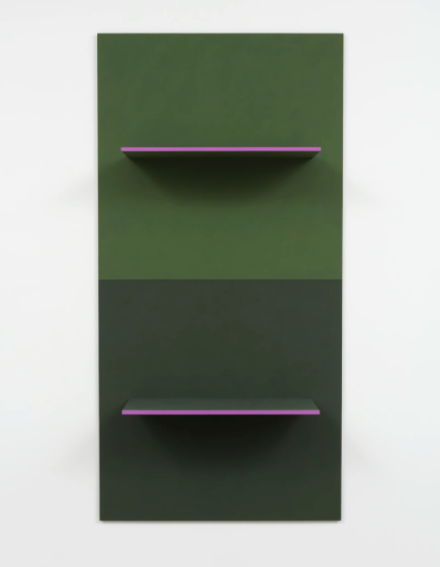
Lisa Williamson,. Body Board (Landscape) (2020), via Tanya Bonakdar
Within this condition of restlessness, the artists in this show welcome processes that revise, reshape, adapt and recondition existing cultural forms by breaking them down to their structural foundations or rehabilitating semantic objects in states of entropy. Employing a diverse range of media and underlying intentions, the work of the seven artists presented in Restless Index represents a vision within a specific bandwidth of this paradigm drawing on language, figures, monuments and architecture.
Throughout, investigations of cultural and political space allow a range of investigations into how language and action shape each other in the future. The relationships between body and text, individual and collective, for instance, dominated the diagrams of gestures captured in Madeline Hollander’s drawings, documenting body movement into glyphs that are further re-interpreted into choreography works. Hollander’s glyphic figures gaze out on the ‘plaza’ of the exhibition, where human residue is inscribed into floor works by Michael Queenland. Collected on the artist’s recurring dérives through Rome, the detritus—advertisement cards, lottery tickets, notes and paper fragments—were scanned and printed to scale onto ceramic tiles. The works operate outside of the past, present, or future, asking what evidence these objects hold in regard to their original and newfound sense of place between archive and ruin.
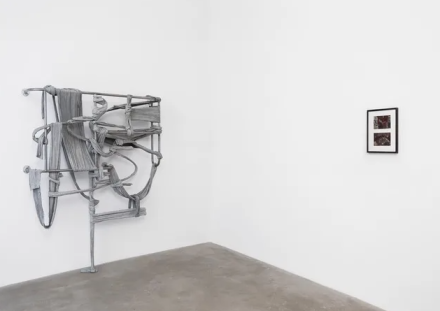
Restless Index (Installation View), via Tanya Bonakdar
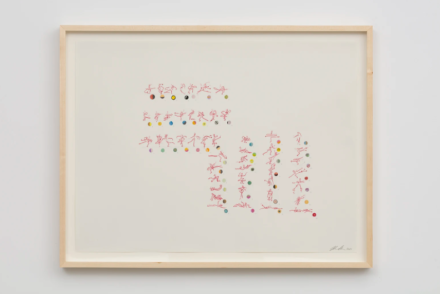
Madeline Hollander, Siren vs Firebird (Preview) (2020), via Tanya Bonakdar
Following along similar concepts of historical and linguistic redirection, Analia Saban’s Magnetic Core Memory Structure #5 (2020) uses a fine thread of acrylic paint to weave through individual fibers of linen. With a broad warp and weft defined by regular notches in the walnut stretcher bars, the work creates rhythmic passages, reevaluating the roles of traditional painting materials. In this composition the defining structure is time and memory, yet revealed within this economy of gesture is a material truth that governs the medium. The delicate open mesh evokes the copper wire thread pattern of historical Magnetic-core memory chips as well as the permeable surface of a painted canvas under magnification, referencing the origins of computer memory while recording the construction of painting.
The range of ideas on view here constitute an ongoing exploration of language as crucible, of action and expression mingling together in ways that continue to change and evolve. It closes November 7th.
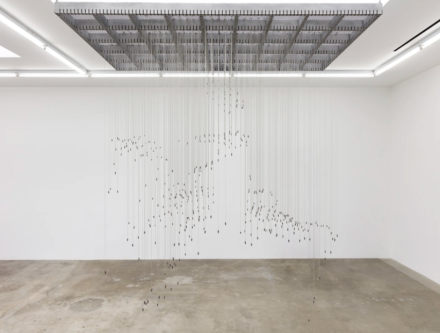
Sean Townley, Fallen Rider (1792) (2020), via Tanya Bonakdar
– J. Haines
Read more:
Restless Index [Exhibition Site]



